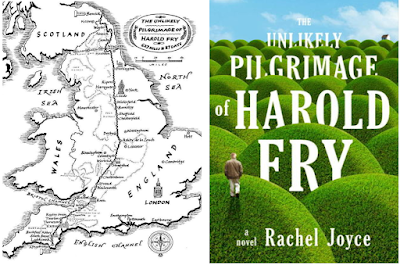“Research on aging runners shows that you can not only stay in the game but also—contrary to popular belief—keep crushing it far longer than you may think.” 1
Sounds wonderful! But, suddenly, one day you realize you can’t keep “crushing it” like you did in the past. Besides your aging body, you may be experiencing chronic pain, cancer, and other physical or psychological challenges. What to do?
Don’t give up!
All that running has kept you in pretty good shape compared to people who did not engage in vigorous physical activities. A new study published in the journal JAMANetwork Open contains an alarming statistic: “A quarter of all women over the age of 65 are physically incapable of walking just two or three blocks or climbing a single flight of stairs. The researchers cite the ‘lack of moderate to vigorous-intensity physical activity’ as the single biggest culprit for this, which over time manifests itself in mobility disability.”
“Crushing It”?
At first, I felt relieved to read this study since I have been running for decades. But while running is a great way to engage in a vigorous physical activity, “crushing it” like I did in the past is not realistic.
For too long my goal had been to run continuously – no breaks, as fast, and as far as I could. I thought rattling off a litany of past and current injuries to fellow runners was evidence of my dedication to the sport. About five years ago, I finally realized those injuries were actually evidence of my dedication to “crushing it” rather than a healthy body. In fact, about 50 to 75% of all running injuries are overuse injuries, in other words, a runner’s dedication to physically overdoing it. 2
Continually “crushing it” psychologically can also be unhealthy. For many years I berated myself when I slackened my pace, ran a shorter distance, or took a walk break. I thought lessening my intensity was “failure.” In fact, many former runners told me they quit running because it was "too depressing" because: - they were no longer “crushing it” - they were not going to get any faster nor run another marathon, so “Why bother?” Thankfully, I don’t share their feelings but I “get” why they feel that way. Despair and depression are not healthy, and I want to be healthy.
I am not fast, nor do I have the endurance I had in previous years. I know my days as a runner are numbered. …. yet I still want to run.
1. LISS Activities
LISS is “low-intensity, steady state” exercise. During LISS you might break a light sweat, but not much more. Your breathing is fairly steady, and you can easily carry on a conversation (aka the “talk test”). Simply put, LISS involves elevating your heart rate with activity, but not letting it go beyond 50 percent of your maximum heart rate, and then keeping it there for at least 30 minutes. I prefer to use the “talk test” but you can estimate your maximum heart rate by subtracting your age from 220.
You can also use heartbeats per minute to measure intensity. Sports and conditioning coach Mike Robertson recommends keeping your BPM (beats per minute) between 120 and 150 for low-intensity exercise. 3
Examples of LISS activities:- slow jog,
- walk/hike on flat terrain,
- riding a bicycle at an easy pace of less than five miles per hour and at a low resistance,
- leisurely swimming
You won’t increase your risk of injury to the same extent as if you just ran “junk miles.”
* I run six mornings a week and LISS-walk one. My challenge is to simply enjoy LISS and not worry about “crushing it” with a fast pace or long distance. Eventually I will transition from frequent running to more frequent LISS acitivities.
2. Simple Walk Breaks
According to Trainer, Ania Gabb, regular walking breaks while running actually makes you a better runner. “People who run a lot can push their bodies too hard and end up injuring themselves, so implementing walking breaks is a good way to prevent injury mid-run. After a one or two-minute break of just walking, you’ll be able to carry on stronger.” 5
Jeff Galloway, running coach and creator of the popular Run Walk Run Method, started training runners by having them focus on their breathing, “The huff-and-puff rule emerged: when you hear huffing and puffing increase, take more frequent walk breaks and slow the pace.” 6
3. Walking, Walking!
Walking provides a lot of the same benefits as running, and is a valuable workout in its own right. 8 Walking regularly reduces your risk of hypertension, high cholesterol, diabetes and improve your cardiovascular health.9 Plus, a good walk does wonders for your mental health and can reduce symptoms of depression. 10
*My daily routine includes a mid-morning dog walk at a park and an afternoon stroll around our neighborhood. In the future, I will probably transition from 1 run and 2 walks a day to 3 walks a day – and from there, I guess it will be 3 – 2 – 1 - done!
You Are Crushing It!
My running guru, Dr. George Sheehan, once said, “Growing old is a game of verve and imagination and excitement.” He ran with metastatic prostate cancer for seven years before his death in 1993. Several months before his death he could no longer run but he was still ambulatory. He was “crushing it.”
1. https://www.runnersworld.com/training/a28691136/aging-runners/
2. https://link.springer.com/article/10.2165%2F00007256-199214050-00004
3. https://robertsontrainingsystems.com/blog/long-duration-low-intensity-cardio/
4. https://www.livestrong.com/article/1012273-steadystate-cardio-new-feelgood-workout/
6. http://www.jeffgalloway.com/training/run-walk/
8. https://www.runnersworld.com/training/a32712350/walking-more/
9. https://www.ncbi.nlm.nih.gov/pmc/articles/PMC4067492/
10. https://www.thelancet.com/journals/lanpsy/article/PIIS2215-0366(18)30227-X/fulltext










